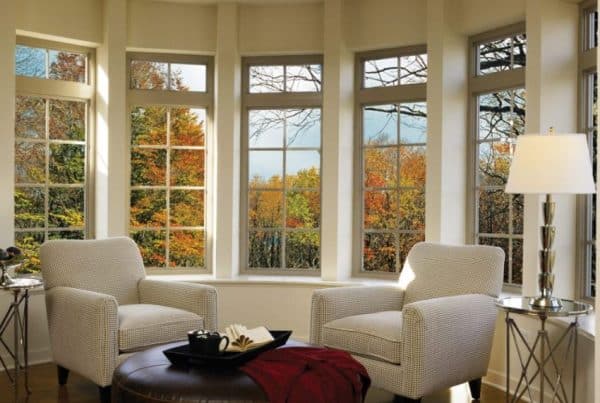The kitchen is the heart and soul of any home. So whether you like to invite friends over for lunch or you are a budding chef, the chances are you want to make the most of your kitchen. According to the U.S. Census Bureau, the average kitchen size is 1500 square feet, which is well up from homes built in the 1970s.
However, you may not have as much space to work with if you live in an apartment or in an older home. Here are some great design ideas to make the most of those small spaces.
Minimalism
The easiest way to make the most of a small kitchen space is to opt for the minimalist approach. Minimalism is all about keeping things simple.
The advantage of minimalism is how easy it becomes to establish a sense of order while making the most of design elements that create an illusion of space. For example, lighter colors, clean lines, and similar textures can make the most of even the smallest kitchen space.
Creating a streamlined kitchen space doesn’t mean throwing out those appliances. Instead, limiting accessories to a few essential items that make your kitchen unique is crucial to being minimalistic without losing character.
Concealed
The biggest emerging trend within kitchen design is the concealed kitchen. Think cabinets that are designed to easily blend into a room or appliances that disappear beneath your countertop.
Many modernists consider concealed design to be the height of modernity and a tad futuristic. However, hiding or camouflaging parts of your kitchen can enhance a limited space like nothing else.
In particular, there’s a massive push toward concealed work areas with sliding doors hiding part of the kitchen structure.
Note that concealed kitchens are in fashion, so expect to pay a premium for an entire suite.
Creative Shelving
The biggest drawback of a small kitchen is the lack of storage. Finding places to put all your pots, pans, spices, and occasional utensils can be challenging without leaving the room cluttered and chaotic.
Ample shelf space is critical to making the most of your kitchen. Floating shelves are an excellent minimalist storage idea, as is making the most of all available wall space. Think about how you can use your vertical spaces to get the most from your kitchen.
Installing pull-out shelves in Cameron Park, CA, is another excellent option because it allows you to embrace the concealed look. These shelves are ideal for storing those appliances and other cooking tools you will not necessarily use daily.
Galley Style Kitchens
The galley kitchen style has been around for centuries. It was initially conceived for use on boats, where a ship’s cook would use the space to feed the men onboard. As a result, they were extremely spartan and often lacked the flowing design styles of today’s kitchens.
Believe it or not, the first galley kitchen was only invented in the 1920s as a way to save space for housewives in cramped accommodations.
The galley-style kitchen consists of two parallel countertops and a walkway in between. European visitors will find the galley style a widespread kitchen design, even in the modern era.
One-Wall
The one-wall design is trendy within smaller apartments and period homes. The one-wall kitchen acquires its name for its design of running all the appliances and cabinets along one wall.
The downside is that you will lose storage space compared to the galley kitchen. But on the other hand, the one-wall kitchen is prized for its openness.
Clever design is essential to making the one-wall kitchen work for you. One alternative is to purchase a dining table that can double as an extra workspace, or you could even invest in a wheeled butcher’s block.
Concealed storage is another design idea that can be easily combined with the one-wall kitchen.
Built-In Storage
Not every kitchen design requires a separate cabinet or drawer for each and every utensil and appliance. Instead, consider incorporating built-in storage to maximize the space you have available to you.
Some ideas for built-in storage include:
- Fixing racks to the inside of cupboard doors
- Fitting shelves into the corners of the kitchen
- Add shelving that goes right up to the ceiling for those occasional items
- Convert an island bench into a breakfast bar, with mugs and cutlery stored underneath
Savvy designers will know how to make the most of built-in storage. Little corners and recesses are often neglected, but in the small kitchen, they are vital. Think outside the box and move away from traditional design ideas.
Cohesive Color Palettes
How you use color in your design will determine the image and feel you get when stepping into your kitchen. People often look at period homes and are surprised at their limited space. Yet they all have one thing in common: the people of yesteryear preferred dark colors and surfaces.
Lighter color palettes offer the illusion of space. Opting for lighter colors doesn’t automatically have to mean making everything white. Consider the surrounding areas of your home and extend their finishes into your kitchen zone to create cohesiveness throughout your living space.
Keep it Light
Window splashbacks and skylights can do wonders for a small kitchen. Look for a design that leaves your kitchen looking bright and airy. You want to create the illusion of a larger space to give you a sense of more freedom whenever you’re hanging out in your kitchen.
Combining a skylight or other lighting source with a splashback can make even the smallest kitchen feel larger than it actually is.
Conclusion
It’s no secret that kitchen spaces have peaked in terms of area. With more and more people resorting to apartments and smaller new-built homes, particularly in major metropolitan areas, it can feel like you’re condemned to a cramped, awkward kitchen.
Intelligent design dedicated to small kitchens can give you that extra space and essence of freedom you want from a room you’ll be spending a considerable amount of time in.
What’s your favorite small kitchen design?








